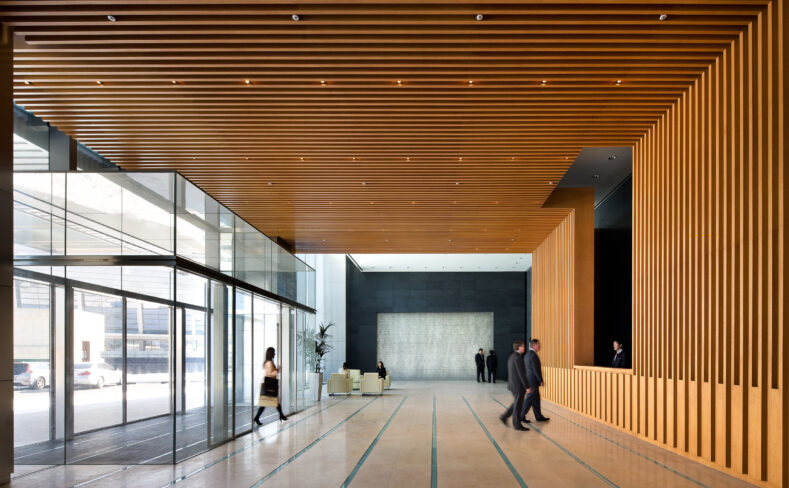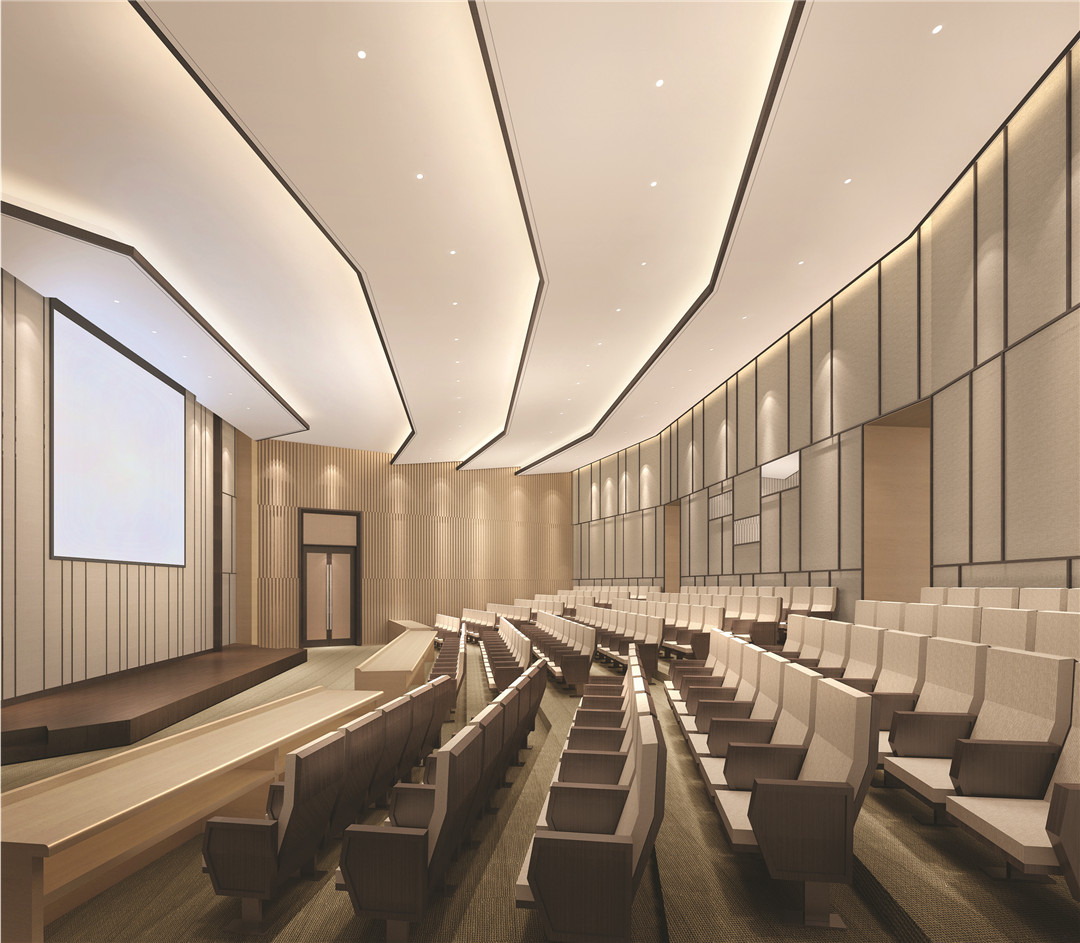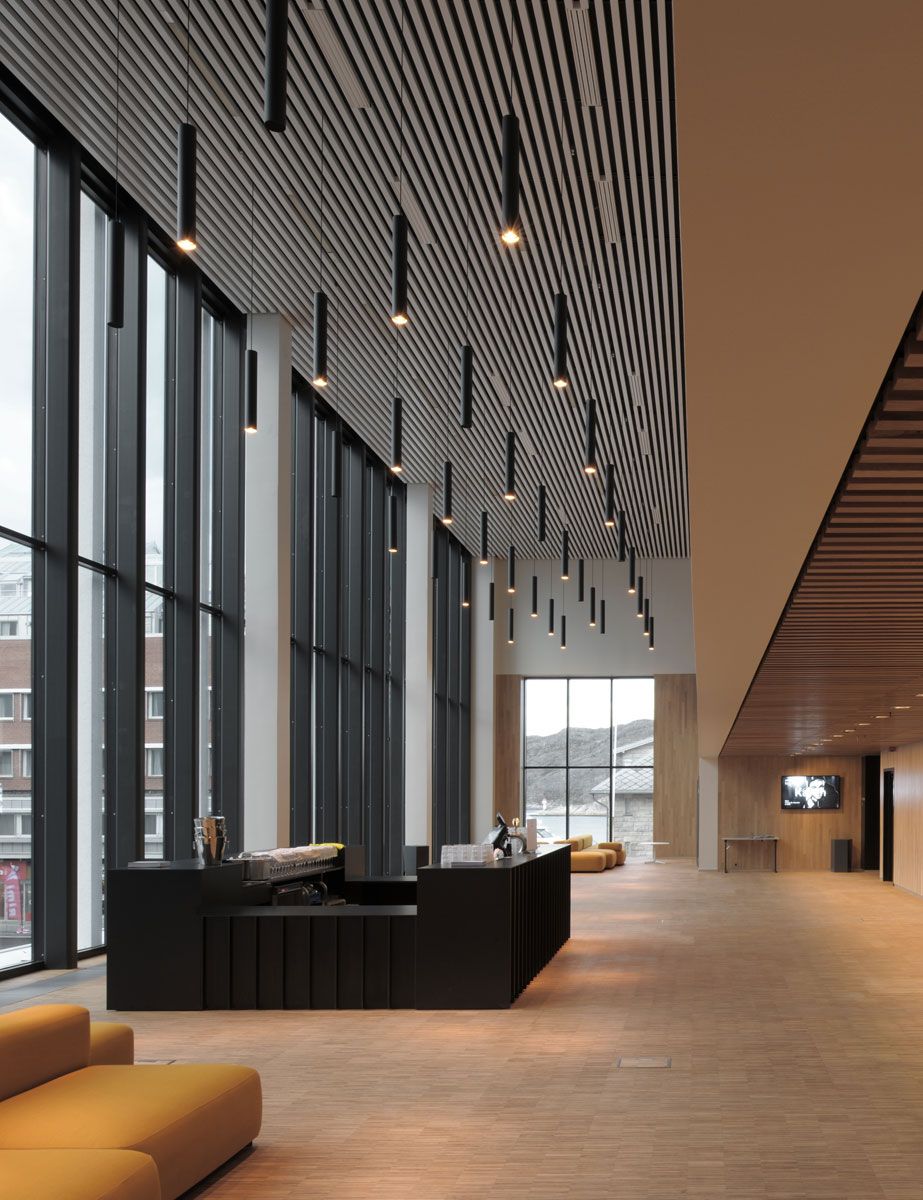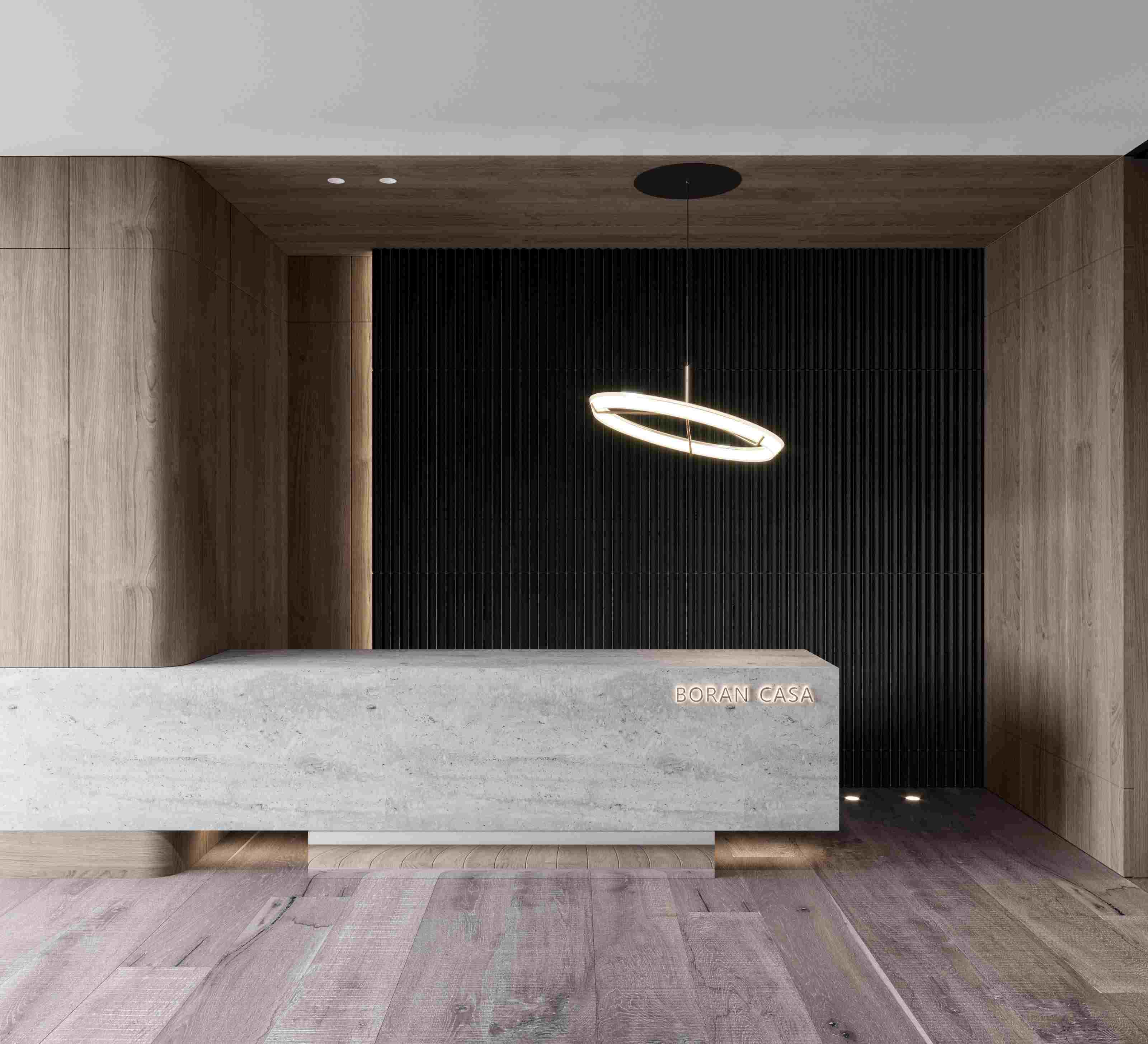
The Ultimate Guide to WPC Wall Panels
Explore the world of modern architectural decoration, where we not only pursue beauty, but also environmental protection, durability and versatility. In this balance between practicality and beauty, an emerging building material—WPC (wood plastic composite) wall panels is leading the innovation of decorative materials.
This innovative material brings new possibilities for indoor and outdoor decoration with its unique properties and diverse application areas. Let’s take a closer look at WPC wall panels and explore its features, benefits and role in modern architecture.
Related Articles
Your Best Choice for Wall Decoration: WPC Wall Panel
Have You Heard of This Most Cost-Effective WPC Wall Panel?
How to Choose Suitable WPC Wall Panels?
WPC Wall Panel: Blending Elegance, Functionality and Innovation
I. Basic knowledge of WPC wall panels
1. Composition of WPC wall panels
WPC wall panel (Wood-Plastic Composite Wall Panel) usually consists of the following components:
(1) Wood fiber (wood powder or sawdust)
Mainly derived from waste in the wood processing industry or debris generated during wood processing. These wood fibers serve as an important component of WPC wall panels, giving them their natural wood texture and texture.
(2) Thermoplastics (polyethylene, polypropylene, etc.)
Plastic is often the other main ingredient in WPC siding. These can be recyclable plastics that are mixed with wood fibers to form a strong composite.
(3) Additives
Some special chemicals or additives may be added during the manufacturing process of WPC wall panels, such as preservatives, antioxidants, stabilizers, etc., to enhance the weather resistance, anti-corrosion performance and stability of the material.
(4) Dye or pigment (optional)
To give WPC siding different colors and textures, dyes or pigments may be added. This allows the siding to mimic the look of a variety of woods while also providing a variety of decorative options.
The above ingredients are mixed, extruded or molded through processing techniques to form WPC wall panels. This composite material combines the natural texture of wood with the weather resistance and durability of plastic, making it one of the most popular materials for indoor and outdoor decoration.
2. Manufacturing principle of WPC wall panels
The production principle of WPC wall panels involves the process of mixing wood fibers and plastics and going through specific processing techniques to form composite panels. The general principle of making WPC wall panels includes the following steps:
(1) Material preparation
Wood fiber: Typically wood chips, wood flour, or other wood waste materials are used. These wood fibers can be waste products from the wood processing industry and are intended for recycling.
Thermoplastics: such as polyethylene (PE), polypropylene (PP), etc. Plastic is used to mix with wood fibers to form composite materials.
(2) Mix
Wood fibers and plastic are mixed in certain proportions. During the mixing process, additives such as preservatives, stabilizers, etc. are often added to improve the performance and durability of the composite.
(3) Processing
The mixed raw materials go through processing processes such as extrusion or molding, and are formed through high temperature and high pressure.
(4) Extrusion
The mixture is heated by an extruder, extruded into a plate shape, and cut into specified sizes through a molding die.
(5) Molding
The mixture is placed into a mold and hot-pressed under high pressure to shape and solidify.
(6) Surface treatment
The formed WPC wall panels may require surface treatment, such as grinding, polishing or spraying, to increase the appearance texture and protective layer.
The entire production process is designed to fully mix wood fibers and plastics and shape them into WPC wall panels through specific processing techniques. This manufacturing method combines the advantages of wood and plastic, resulting in a new composite material with the appearance of natural wood and the durability of plastic, suitable for indoor and outdoor decoration.
3. The development history of WPC wall panels
As a composite material, WPC wall panel has experienced a period of development and evolution:
(1) Early 1990s
The concept of WPC materials was first proposed and research and development began in the United States and Europe. The initial products are mainly used for outdoor landscaping materials such as decks, railings, etc.
(2) Mid to late 1990s
WPC materials are gradually attracting attention in the fields of construction and interior decoration. Continuous research and technological advancements make WPC materials more stable and suitable for a wider range of applications.
(3) Early 2000s
WPC wall panels began to enter the market and became a popular choice for indoor and outdoor decoration materials in buildings. Its weather resistance, ease of maintenance and environmentally friendly properties have been recognized and it has gradually gained market share.
(4) 2010 to present
As environmental preservation and sustainable development become more widely recognized, the market demand for WPC wall panels is increasing. Manufacturers continue to improve production processes, increasing product variety, color options, and better performance.
At present, as an innovative building material, WPC wall panels have gradually become one of the first choices for indoor and outdoor decoration. It not only combines the advantages of wood and plastic, but also has the characteristics of strong weather resistance, easy maintenance, and environmental protection, and has been widely recognized and used. As technology advances and market demand increases, WPC wall panels are expected to continue to play an important role in the construction industry.

II. Advantages of WPC wall panels
1. Improve insulation performance
Excellent thermal insulation properties are one of the main reasons why many people choose wood siding. Wood is a natural insulator, effectively preventing heat from escaping and cold from entering the house.
Fibers from wood and recycled plastic are combined to create WPC material. The material’s nature gives it superior insulating qualities over wood siding.
It can play a big role in daily life. Keep indoor spaces cool during hot seasons and warm during cold weather. You will think that investing in WPC siding is a smart idea.
2. Good sound insulation effect
Wooden wall panels have excellent sound insulation. But WPC wall panels can be designed with special sound-absorbing structures to insulate them. Therefore, wood-plastic wall panels have a stronger sound insulation effect than wooden wall panels. This makes WPC siding the best choice for people looking for privacy and peace of mind.
3. Excellent durability
With traditional wood siding, you’ll need regular maintenance, with cleaning, painting, and staining taking no more than two or three years. to ensure it lasts longer. This means you’ll still be spending a lot of time and money after installing wood siding.
On the other hand, WPC wall panels have a long service life of up to 30 years. Due to the nature of the composite material, it is very durable and has good water and mildew resistance. It is easy to clean and does not require constant maintenance, just scrub with soap and water every once in a while.
4. Beautiful appearance
WPC siding is available in a variety of looks. Wood-plastic siding can achieve the appearance of ordinary wood siding, white wood siding or other types of siding. In addition, it can also achieve decorative surfaces that wooden wall panels do not have, such as 3D surfaces. Many people who use wood-plastic siding choose it for this reason.
WPC siding looks rich and neat and can give your house a unique look. You can also select from a range of styles and patterns to give your home a distinctive appearance. Wood plastic wall panels are a great way to add color and brightness to a room when combined with different kinds of furniture and decorations.
For a classic aesthetic, composite wall panels will bring a timeless, rustic warmth to your interior. For those looking for a more decorative interior, WPC wall panels can offer timeless appeal. Both are available in a variety of profiles and finishes to suit your wildest design dreams.
5. Environmentally friendly
Wood-plastic composite wall panels are made from a mix of recyclable plastic and wood fibers. Using recyclable plastic reduces plastic pollution on the planet and helps protect the environment. It has been used so far to increase the use of trees, reduce excessive felling of forest resources, and also help protect the natural environment.
In addition, WPC wall panels do not contain formaldehyde and other harmful substances, will not pollute the outdoor environment, and are in line with the green and environmentally friendly design concept. Therefore, wood plastic siding is environmentally friendly, especially when compared to other options. The promotion of wood-plastic wall panels helps to better protect the environment we rely on for survival.
Some people might be surprised by the advantages of WPC siding, so you won’t have to worry about taking down too many trees to make beautiful wood siding.
6. Easy to install
Installing WPC wall panels is simple. Google has some amazing do-it-yourself project ideas. But, we advise that you get an expert to complete the task. Without the proper tools and experience, installing circuit boards yourself can cause unnecessary delays and problems.
If you choose to install the wood plastic siding yourself, make sure you follow the manufacturer’s detailed installation instructions and take the necessary safety precautions.
7. Strong weather resistance
WPC wall panels can remain stable under various climatic conditions and are not susceptible to moisture, deformation or fading, and are suitable for indoor and outdoor use.
WPC wall panels are made from a mixture of wood fibers and thermoplastics. This hybrid material has strong weather resistance. The addition of plastic enhances the water resistance of the board and reduces water absorption, thereby reducing the risk of expansion and deformation caused by humid environments.
WPC wall panels are often added with anti-ultraviolet ingredients, which are not prone to fading or discoloration when exposed to sunlight, and can maintain a beautiful appearance for a long time.
8. Lightweight structure
WPC wall panels are typically made from a blend of wood fibers and thermoplastic, which is lighter than solid wood. This mixed material maintains the wood texture while reducing overall weight.
The lightweight characteristics prevent WPC wall panels from causing excessive load on the building structure, which is especially suitable for some lightweight building structures or designs that need to reduce the total weight.

III. Application of WPC wall panels
Due to its excellent performance, WPC wall panels have a wide range of applications in the construction and decoration fields:
– Indoor decorations
1. Living room or bedroom
WPC is also known as woodworking friendly material. Because wood-plastic wall panels are easy to install and construct. It can be cut, screwed, carved, drilled and sawed. And no complicated construction technology is required, saving installation time and cost.
Indoor composite wall panels have good sound insulation effects. It can provide you with a living room or bedroom free from outside noise. Let you enjoy indoor life better. At the same time, wood-plastic wall panels come in a variety of color options and can match various styles of interior design. It also contains no harmful chemicals such as formaldehyde. This provides more security for your family.
2. Kitchen
WPC material has high fire resistance. It is effectively flame retardant and has a fire protection level of B1. It will self-extinguish in case of fire and will not produce any toxic gas. WPC siding is strong on the inside and beautiful on the outside. And it’s an odorless material, perfect for installation in the kitchen.
3. Bathroom
Bathroom wall panels are required to have excellent waterproof and mildew-proof properties. And WPC wall panels achieve this perfectly. Due to the nature of the material from which it is made. Therefore composite wall panels have perfect waterproof properties.
In addition to being offered in a range of hues, WPC wall panels can be specially colored. So it’s simple to select the look you want. To accentuate the elegance of your bathroom wall panels, you can select the ideal decor for your space.
4. Indoor roof
Our siding panels can be used not only on the walls of your house, but also on your roof. Nails, screws and fasteners hold stronger when used with WPC than with natural wood. When wood plastic materials are installed on the ceiling, they can also decorate the ceiling with beautiful lights. This is one of the great ideas you can achieve with composite wood siding.
5. Office background wall
Indoor composite wall panels not only have the appearance of imitating natural wood grain. It also has a 3D surface full of three-dimensionality. WPC siding will not warp or splinter into small pieces like natural wood. Therefore no repairs and maintenance are required. What’s more, when you’re attending a meeting in the workplace, quietness and privacy are your top concerns. Wood-plastic materials have good sound absorption and energy-saving effects. It can save indoor energy by more than 30%.
6. Lobby wall decoration
Wood-plastic wall panels are acid-proof, waterproof, termite-proof, and have good sound insulation effects. It can be molded into different shapes and sizes depending on the requirements and needs. 3D wood grain and heat transfer printing are used for modern and high-end surface treatment, making the wood plastic wall panels look prosperous. Reasonable price, attractive design. Therefore, wood plastic materials are often used as wall panels and ceilings in hotels.
– Outdoor decoration
1. Exterior wall decoration
WPC wall panels have good weather resistance and aesthetics in building exterior wall decoration. They can effectively resist wind, sun and rain, are not easy to fade or deform, and maintain long-term decorative effects.
2. Patio and garden decoration
For patio and garden decoration such as floors, railings, fences, etc. WPC wall panels have strong weather resistance and are not susceptible to moisture, deformation or cracking, and are suitable for long-term use in outdoor places.
3. Outdoor furniture production
Making outdoor furniture such as chairs, tables, etc. It is widely used in outdoor furniture manufacturing because of its durability that is not affected by the environment.
4. Landscape design
In the landscape design of parks, squares, leisure places and other places, it can be used on walls, railings, stairs and decorative structures to increase the decorative effect and practicality.
5. Staircase and passageway decoration
Used to decorate outdoor stairs, corridors or walks to increase aesthetics while providing durability and anti-slip properties.
– Commercial and public spaces
1. Interior and exterior decoration of commercial buildings
Used for wall decoration in shops, restaurants, offices, etc., to increase decoration and environmental protection.
2. Public places
Such as the decoration of public places such as parks, exhibition halls, and gymnasiums, it provides good decorative effects while reducing environmental burden.
– Special application areas
1. Decoration project
In decoration projects, it can be used as decorative panels, partition walls, ceilings, etc.
2. DIY projects
WPC wall panels are suitable for DIY projects and can be cut and assembled as needed, making them easy to install and replace.
WPC wall panels are widely used in architectural decoration due to their weather resistance, environmental protection and decorative effect. They are not only beautiful and practical, but also can show excellent performance in various indoor and outdoor scenes.
IV. Things to note before purchasing WPC wall panels
Before purchasing WPC (wood plastic composite) siding, consider the following factors to make an informed choice:
1. Advantages
Not all WPC boards are created equal. Choose products that are high quality, durable, waterproof, and have the perfect combination of wood and plastic.
2. Size and thickness
Consider the size and thickness of the panels. These must be customized according to your requirements and the size of the space in which you intend to install them.
3. Color and design
Choose a color and style that appeals to your aesthetic preferences and coordinates with the room’s current décor.
4. Cost
While price shouldn’t be the only deciding factor, it’s crucial to consider your budget. Keep in mind that more expensive products usually have better quality and longer lifespan.
5. Installation requirements
The installation process varies depending on the type of wood plastic siding. If you plan to install, look for options with detailed installation instructions.
6. Nursing needs
Choose WPC siding that doesn’t require much care. They should be easy to clean and resistant to UV radiation, water and insects.
7. Environmental impact
If sustainability is a concern, choose WPC panels made from recycled materials. Also, confirm whether they are recyclable.
8. Company reputation
Finally, look at the company’s reputation. Reviews and endorsements can reveal a product’s quality and customer service levels.

V. Installation and maintenance guide
– Common installation methods
1. Hook type installation
This is a common installation method and is suitable for models with special hooks designed on the back of the wall panel. Secure the wall panel to the wall by hanging it from the mounting frame.
2. Direct fixed installation
You can use screws or nails to directly fix the wall panel to the wall or wooden frame to make it firm.
– Installation precautions
1. Check the wall panels
Inspect all WPC boards for damage or faults before installation. This makes the installation process smooth and the results impeccable.
2. Wall preparation
Make sure the wall is flat, dry, free of dust and debris, and if necessary, perform wall treatment or waterproofing first.
3. Use the right tools
The correct tools are essential for a successful installation. Typically, you’ll need a saw to cut the boards, a drill to secure them to the wall, and nails or screws made specifically for WPC lumber.
4. Wall panel measurement and cutting
Make sure the wall panels are accurately sized before installation and cut them as needed, especially in areas that require decorative edges or special shapes.
5. Allow expansion
WPC material expands and compresses with changes in temperature. When installing the boards, leave a slight space between the boards to accommodate this expansion.
6. Fixation method
According to the selected installation method, use fixing devices (screws, nails, etc.) rationally to ensure that the wall panels are firmly fixed.
7. Hole reservation
If additional nail holes or screw holes are required in the wall panel, make sure the holes are positioned accurately and do not affect the overall aesthetics of the wall panel.
8. Temperature and environment
During installation, high or low temperature environments should be avoided to avoid deformation or shrinkage of wall panels due to temperature effects.
9. Follow manufacturer guidelines
Installation guidelines may vary for different brands of WPC siding. To guarantee appropriate installation style and approach, adhere to the manufacturer’s installation directions and suggestions.
10. Processing board
After installation, you can treat the panels with an appropriate sealant. This increases the durability and water resistance of the board.
11. Ventilation and waterproofing
Ensure proper ventilation after siding installation to reduce the development of moisture and mold. If necessary, perform waterproofing to extend the life of the siding.
12. Clean regularly
Wood-plastic siding requires little maintenance, but regular cleaning will keep it looking great and extend its life.
– Maintenance tips
1. Regular cleaning
Wipe the surface of the siding with a soft, damp cloth or sponge to remove dust, dirt, and stains. You can use mild cleaners or specialized WPC cleaners, but avoid using chemical cleaners that are too strong to avoid damaging the surface of the wallboard.
2. Avoid scratches
Try to avoid scratching the wall panel surface with sharp or hard objects to prevent scratches or damage.
3. Prevent overexposure
Prolonged exposure to sunlight may cause the color to fade. It is recommended to regularly replace the exposed surface of WPC wall panels, or consider adding shading facilities to outdoor areas.
4. Regular inspection
Regularly check the connecting parts and fixing devices of the wall panels to ensure that the wall panels are firmly fixed and repair loose or damaged parts in a timely manner.
5. Moisture-proof and mildew-proof
Keep the environment around the wall panels as dry and ventilated as possible, and avoid prolonged accumulation of water or moisture to reduce the growth of mold.
6. Fair use
Avoid slamming heavy objects or placing excessive pressure on the wall panel to avoid damaging the surface or structure of the wall panel.
7. Regular maintenance
According to the usage and environment of the wall panels, regularly maintain the wall panels, such as applying waterproofing agent or maintenance agent, to increase the durability and aesthetics of the wall panels.
VI. FAQs
1. Is WPC wall panel waterproof?
Yes, these panels are waterproof and made from WPC. These sheets can be used in humid areas such as kitchens and bathrooms. Naturally, you may use them in garages, basements, bedroom ceilings, and other areas of the house.
2. Can we cover up existing plywood or tiles with WPC panels?
Yes, drywall, plywood, and ceramic tile may all be covered with WPC wall panels.
3. Is WPC wall panel expensive to maintain?
No, these WPC panels require little to no maintenance. These panels are simple to clean with a moist cloth. But when cleaning, avoid using abrasives or chlorine.
4. Is it possible to mount WPC wall panels on damp walls?
Since many people use WPC wall panels to remove damp walls worldwide, they are the finest option for wet walls.
5. How much does wood plastic wall cost compared to other building materials?
The cost of a WPC wall depends on a variety of factors, including panel size, chosen design and installation location. They are less expensive, nonetheless, than other building supplies like brick or genuine stone. This is partially due to the fact that its manufacture uses recycled materials, which lowers production costs.
They also save labor expenses and are inexpensive for both home and commercial applications because they are lightweight and simple to install. It goes without saying that the precise cost will depend on your unique requirements and preferences, so it’s advisable to compare estimates from several providers to make sure you’re getting the greatest deal.
VII. Conclusion
As an innovative building decoration material, WPC wall panels present many advantages and bring new possibilities for indoor and outdoor decoration. It not only combines the natural beauty of wood materials, but also has the weather resistance and easy maintenance of plastic materials. Diversified in design, it can imitate a variety of wood textures and colors, providing more choices for decorative styles.
With the emphasis on environmental protection and sustainable development, WPC wall panels are favored for their environmentally friendly properties. They are made of recycled wood fibers and plastics, making more efficient use of natural resources. Its characteristics of strong weather resistance, easy installation, cleaning and maintenance make it widely used in the market, and has gradually become one of the first choices for architectural decoration.
Therefore, the emergence of WPC wall panels not only enriches the choice of building materials, but also provides more innovative and sustainable possibilities for decoration. As technology continues to advance and market demand increases, WPC wall panels are expected to play a more important role in the future construction industry. If you have any other ideas about WPC wall panels, please feel free to contact us!
Quick Quotation



